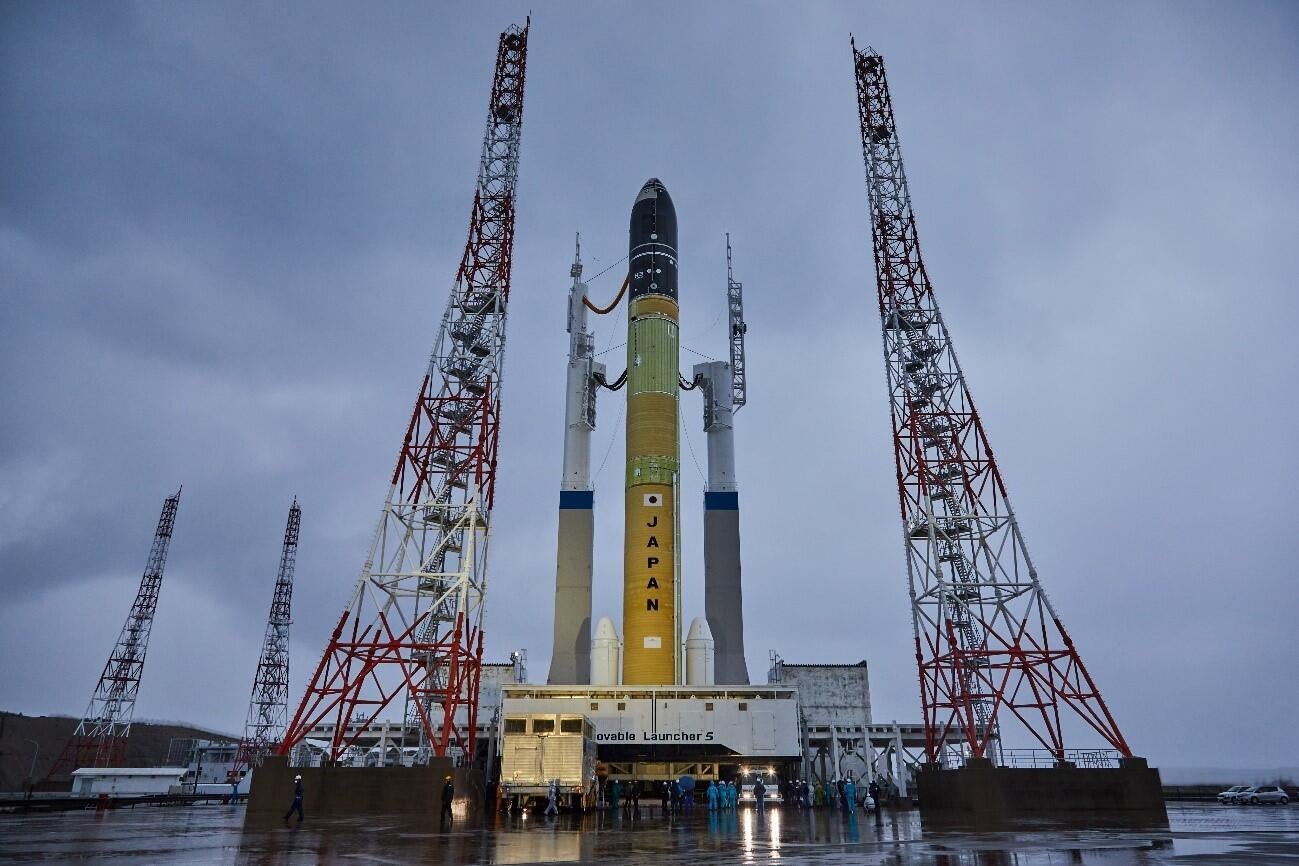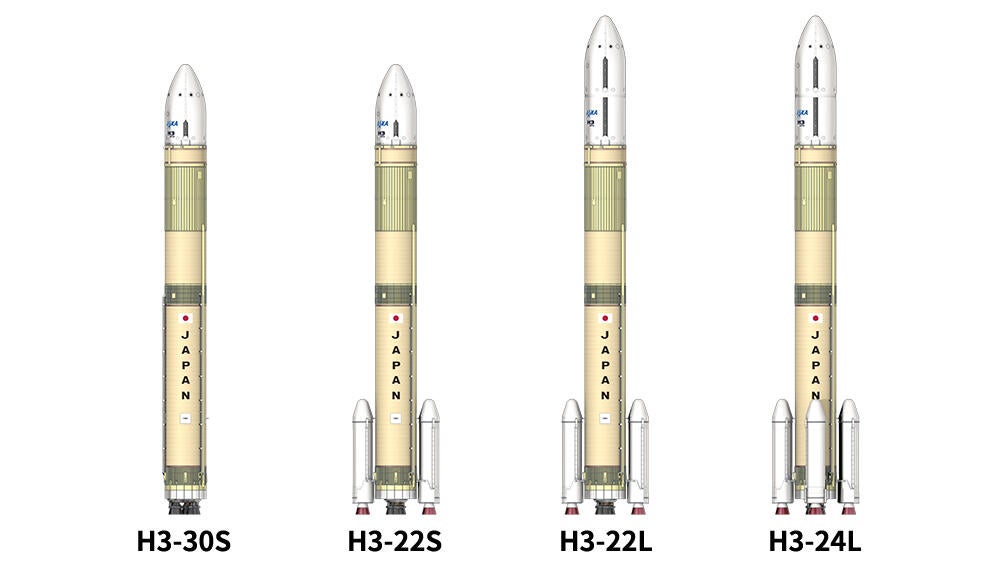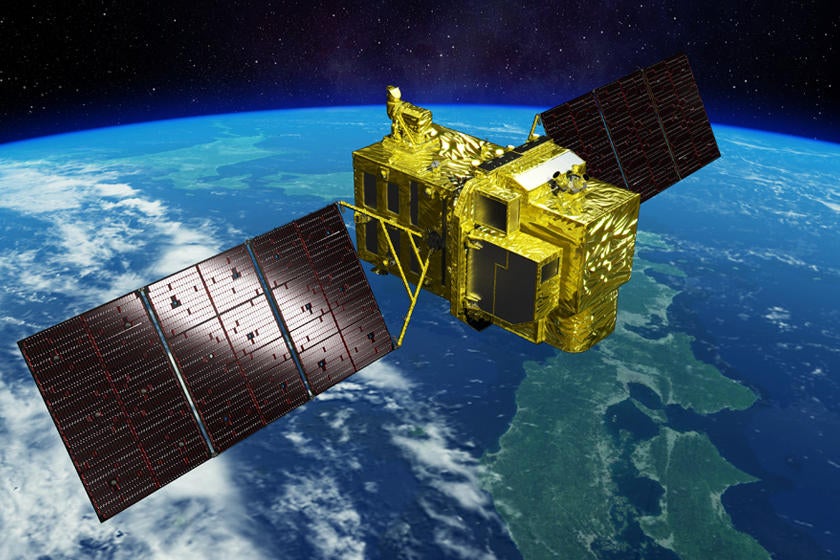Following a series of technical delays, Japan’s H3 rocket is set to make its much-anticipated debut this week. Here’s what you need to know about the medium-lift rocket and its inaugural mission.
H3 is currently expected to perform its first flight on February 14, with liftoff from the Yoshinobu Launch Complex at the Tanegashima Space Centre scheduled for 8:37 p.m. ET, and with a launch window lasting for less than 7 minutes. The rocket is on a mission to deliver the 4-metric-ton payload, the ALOS-3 Earth observation satellite, to a Sun-synchronous orbit.
For the Japan Aerospace Exploration Agency (JAXA), it’ll be a momentous occasion, as the space agency is positioning H3 as the nation’s next flagship rocket and a way for the country to “continuously have access to space.” Should all go as planned, JAXA will launch the medium-lift rocket roughly six times each year, and it will do so for the next 20 years. H3, Japan’s third-generation liquid hydrogen-powered rocket, consists of two stages, an assortment of possible configurations, and a brand-new engine. Getting to launch day, however, proved to be a slog.

The H3 project, a collaboration between Mitsubishi Heavy Industries and JAXA, was approved in 2013, with work beginning the following year. The H3 launch vehicle was designed with three primary objectives in mind: “high flexibility, high reliability, and high cost-performance,” according to JAXA.
The rocket was supposed to fly in 2020, but serious technical problems with the new LE-9 first-stage engine forced a postponement. The problems, first detected during qualifications testing in May 2020, included cracked turbine blades in the LE-9’s turbopump assembly and a hole seared into its combustion chamber wall. As a result, JAXA bumped the launch from 2020 to spring 2021, but ongoing problems forced yet another delay, this time to early 2023. The H3 rocket now seems ready to go, as JAXA announced in December of last year.

The new rocket has a lot going for it, but reusability is not one of those things. That remains the exclusive domain of SpaceX, at least for medium-lift rockets. But with a target launch price starting at around $US38 ($53) million (5 billion yen), the expendable H3 could present an attractive choice for both commercial and private customers, and also for those looking to hitch along for rideshare missions. And at that cost, it’s about half the price of Japan’s H-IIA rocket, which, in addition to H-IIB, H3 is set to replace. The H3 design relies on some commercial off-the-shelf products from other industries, including the automotive industry, resulting in the “high cost-performance,” JAXA says.
H3 is a two-stage fully liquid propellant launch vehicle with a design partly inspired by its predecessors, H-IIA and H-IIB, and also Japan’s Epsilon rocket. The first stage will feature either two or three LE-9 engines, while the upper stage gets a single engine. The rocket’s strap-on solid rocket boosters are very similar to the Epsilon first stage.
The first and second-stage LE-9 engines feature the world’s first expander bleed cycle engine. In this system, turbine pressure can be high because the heated propellant that drives the turbine can be dumped. Bleeding the turbine in this manner produces higher engine thrust but at the expense of efficiency. And as JAXA points out, expander bleed cycles “can realise both intrinsic safety of simplicity and low cost.”

The fully integrated standard configuration stands nearly 207 feet (63 meters) tall and with a core stage diameter of 17 feet (5.2 metres). H3 should be capable of lifting 8,818 pounds (4,000 kg) to Sun-synchronous orbit and between 8,818 and 17,417 pounds (4,000 and 7,900 kg) to geostationary transfer orbit, according to Parabolic Arc. Future upgrades could make it possible for the rocket to deliver cargo to the Moon, including the planned Gateway space station in lunar orbit.
The rocket can launch with one of two types of fairings, and with a choice of either zero, two, or four solid rocket boosters. Four H3 designations exist depending on the configuration, which meets JAXA’s desire for a flexible launch system. Ground teams assemble the rocket atop the Movable Launcher (ML), which itself rests in JAXA’s Vehicle Assembly Building until it’s time to roll out for fuelling and launch.

For its first mission, the rocket, in its H3-22 configuration, will attempt to deliver the Advanced Land Observation Satellite-3 (ALOS-3), also known as “Daichi-3,” to a Sun-synchronous orbit. The Earth observation satellite is equipped with a multi-spectral sensor for viewing our planet in both visible and near-infrared light. ALOS-3, as the successor to previous ALOS satellites, features an improved ground resolution of 2.6 feet (0.8 metres).
Best of luck to JAXA, Mitsubishi, and everyone else involved in the H3 program. We’ll be sure to set up a watch page on flight day, so don’t worry about missing any of the action. Fly, H3, fly!
